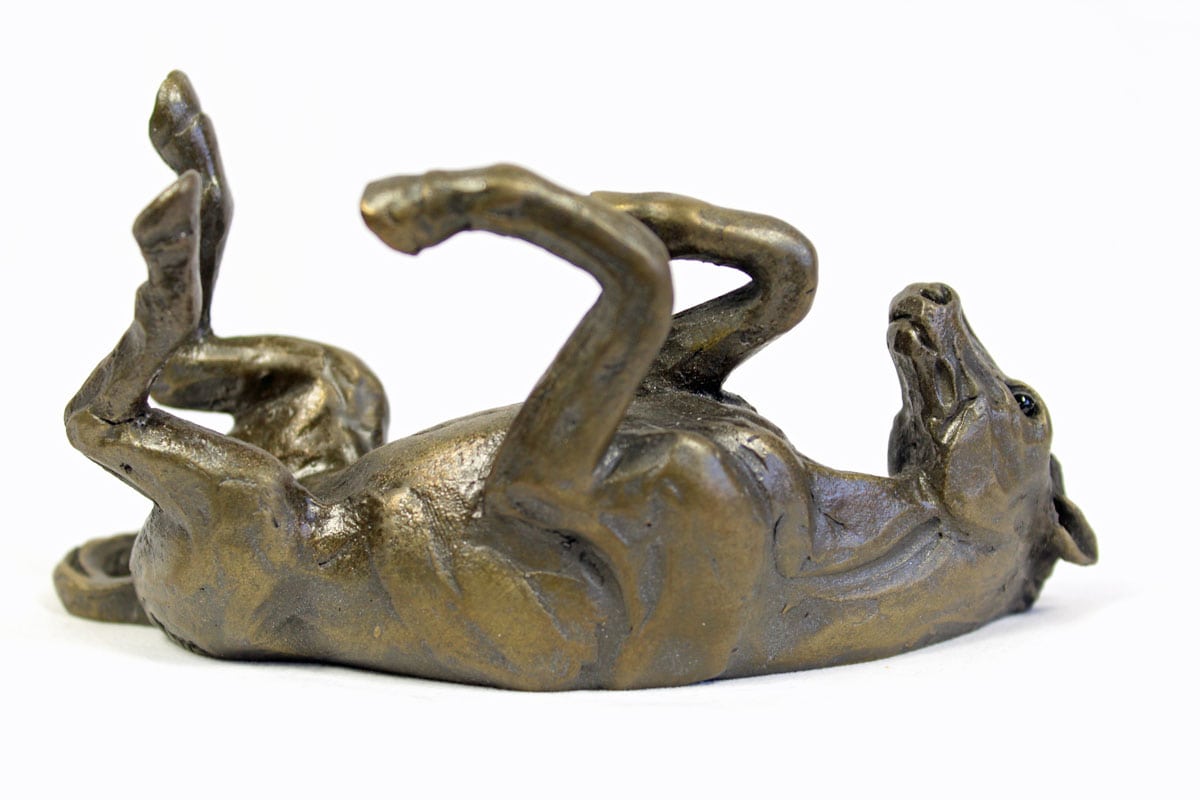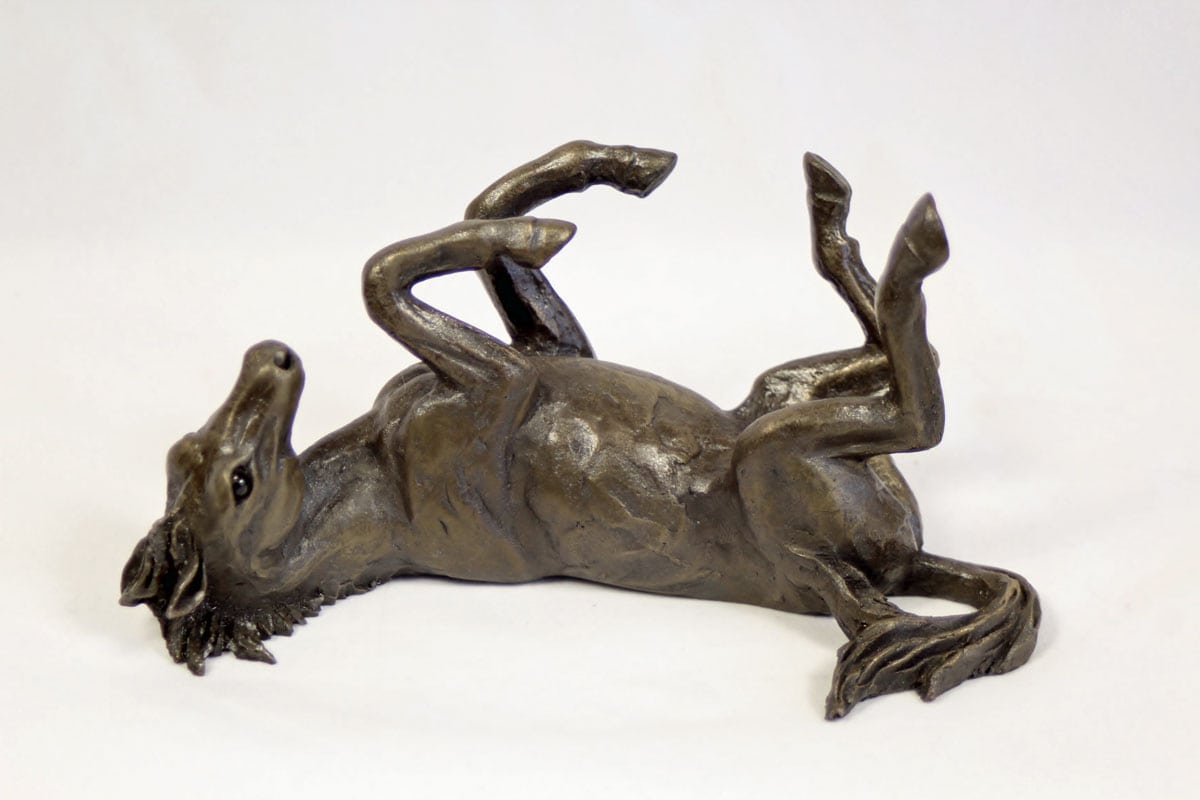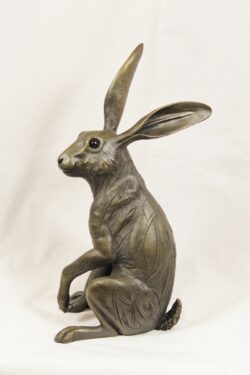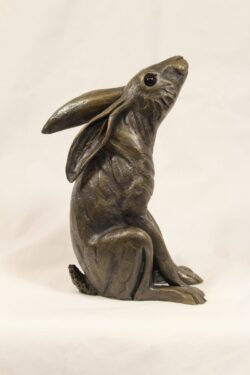Description
bronze resin Horse rolling on its back
Life must be so hard when you haven’t got the means to scratch an itch, especially with all those flies bothering you in the Summer. No matter, as my Horse rolling on its back shows, a good roll in the dust is as good a way as any to sort things out.
Horses
The horse has evolved over the past 45 to 55 million years from a small multi-toed creature, Eohippus, into the large, single-toed animal of today. Humans began to domesticate horses around 4000 BC, and their domestication is believed to have been widespread by 3000 BC.
Horses’ anatomy enables them to make use of speed to escape predators and they have a well-developed sense of balance and a strong fight-or-flight response. Related to this need to flee from predators in the wild is an unusual trait: horses are able to sleep both standing up and lying down.
Ponies are taxonomically the same animals as horses. The distinction between a horse and pony is commonly drawn on the basis of height, especially for competition purposes. Ponies often exhibit thicker manes, tails, and overall coat. They also have proportionally shorter legs, wider barrels, heavier bone, shorter and thicker necks, and short heads with broad foreheads. They may have calmer temperaments than horses and also a high level of intelligence that may or may not be used to cooperate with human handlers!
The only truly wild horse is the Przewalski’s horse (Equus ferus przewalskii), named after the Russian explorer Nikolai Przhevalsky, It is also known as the Mongolian wild horse; Mongolian people know it as the taki, and the Kyrgyz people call it a kirtag. The subspecies was presumed extinct in the wild between 1969 and 1992, while a small breeding population survived in zoos around the world. In 1992, it was reestablished in the wild due to the conservation efforts of numerous zoos. Today, a small wild breeding population exists in Mongolia.
Feral horses such as the mustang, are born and live in the wild, but are descended from domesticated animals.Many populations of feral horses exist throughout the world. Studies of feral herds have provided useful insights into the behaviour of prehistoric horses, as well as greater understanding of the instincts and behaviours that drive horses that live in domesticated conditions.
There are also semi-feral horses in many parts of the world, such as Dartmoor and the New Forest in the UK, where the animals are all privately owned but live for significant amounts of time in “wild” conditions.
Resin Bronze Sculptures
When I make a sculpture I particularly like, I Have it moulded and cast in Bronze Resin. A process that creates an attractive and durable alternative to real bronze. The bronze resin animal sculptures have proved to be very popular as they are affordable and easy to send and I am continually adding to the range. My work is also available in galleries, mainly in the Westcountry.
Links
If you would like to find out more you can also check out my Facebook Page. Every year for Dorset Art Weeks I coordinate several like-minded artists and transform my home into a gallery. Check out the Horethorne Group facebook page as well for all the latest news.





